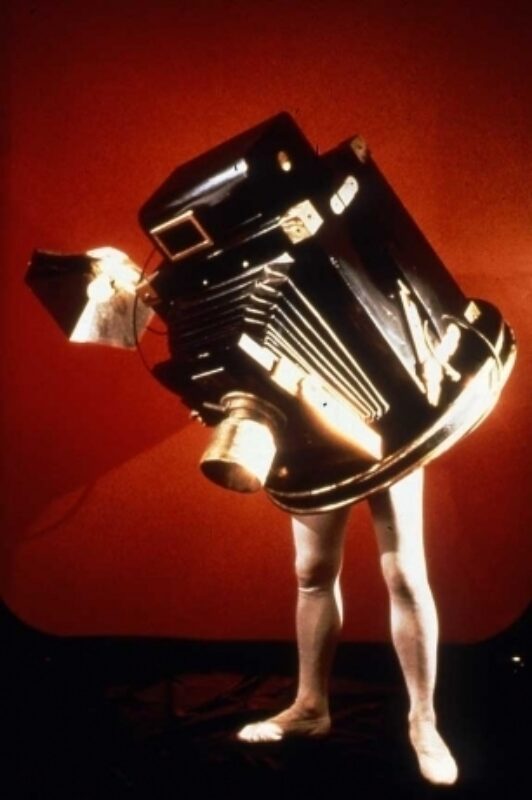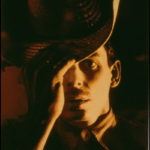Since the mid-70’s, internationally recognized artist Laurie Simmons has staged scenes for her camera with dolls, ventriloquist dummies, mannequins and people to create images with intensely psychological subtexts. This September she will have an exhibition at Gallery Met and is working on a commission for the opera “ Two Boys.” In this interview with artist and Visual AIDS board member Lucas Michael, Simmons talks about her work as well as being the executor of Visual AIDS artist member Jimmy DeSana’s estate.
Lucas Michael:
How did you and Jimmy meet?
Laurie Simmons: A bunch of us were meeting on the A train to go
out to the Far Rockaway beaches. I saw this guy in a white panama hat with a
yashica around his neck that he’d spray-painted white – very stylish. We agreed
that we would look for a loft together – this was 1973. We eventually split a
long skinny loft with windows at each end and set up twin darkrooms.
LM: In thinking
about your work, and Jimmy's work, there is something so vibrant about your
colors, the other-worldliness that you both create, and your interest in people
as subjects and objects. Did you influence each other as artists?
LS: Let me be really straightforward about this – I learned just
about everything I know from him. I tagged along when he shot, modeled for him
and he taught me how to print and set up a darkroom. I’d never studied
photography in art school – he taught me everything. My contribution to him was
probably trying to pull him more towards defining himself as an artist rather
than a photographer.
LS: I mentioned this recently in another interview – I think when someone close to you is dying and they ask a favor of you – you say yes. Jimmy was one of my best friends and he asked me to take his work. We were both 39. Neither of us had very much money. I had a little kid. I had no time. I’d never thought about what it would mean to be the executor of an artist’s estate. I didn’t know where I would keep the archive or how I would house it. I remember thinking 20 years – it will take at least 20 years for people to get the breadth and importance of this work. I made a promise to myself in the early years not to feel guilty when things weren’t happening with his work.
LM: How does it
relate to your own practice as an artist?
LS: It’s difficult to explain what it feels like to be an artist
who maintains the life work of another artist. It’s somewhere between being a
custodian and actually being THE artist. I so believe in the work and I always
have. There is no one but me to make the decisions and I try really hard to
imagine how Jimmy would solve problems and answer questions. I realize more and
more that everything has to come from me. I am very protective of the JDS
estate and in a way much less polite and patient than I might be with my own
work. There are a finite number of things and I fiercely guard them. My
attitude towards his work has certainly influenced my attitude towards my own
work. I have extremely well organized archives now. That’s primarily because of
the state in which I found the work when I received it. Organization takes
years.
LM: From the
very beginning women have played a huge role within the epidemic, and continue
to be vital within the ongoing crisis. As someone who has thought about the
roles of women do you have any thoughts around the work of women within the
ongoing AIDS movement?
LS: You know I’ve honestly never given that a bit of thought. My
observation is that everyone’s efforts have been first and foremost about love
and friendship. I don’t know a single soul who hasn’t experienced some loss as
a result of the epidemic - which I know says something about the world I
inhabit. I know women are meant to be nurturers and caregivers but in my own
personal and anecdotal history I’ve seen everyone play a huge role – men,
women, straight, gay. I will say that Jimmy’s mother Jo – a gracious southern
lady – moved to New York City in the last months of Jimmy’s life to care for
him. This was not easy for her. She and her sister rented rooms in some sort of
church housing and really threw themselves into both Jimmy’s care and city
life. They were really brave. Jo actually died a few months ago. We remained in
touch. She was very proud of her son.
LM: There is something moody and fun about Party Picks. In putting the exhibition
together what were some of the ideas you had?
LS: I actually left the concept and organization of the show to
Fabienne Stephan of Salon 94. I am utterly thrilled that Salon is representing
the estate. I’ve worked with them since 2010 and trust their vision and
appreciate their dedication. I felt for their first JDS show I should open up
the archives to them. I could’ve just given them 20 images and that would be
that but with this plan Fabienne was able to spend real time with the work
getting to know it. I love the result
and what a fresh pair of eyes brought to the installation.
LM: Are there
things happening in the art world, and the world at large, that give you hope?
LS: I feel the current situation – the apparent mind meld of art
and the marketplace— is very damaging to all concerned. The meme that’s out
there that the so called art market has the ability to ferret out what is truly
good has a trickle down effect that makes everybody think less, contemplate less and search less for great
artists and great art. There is a laziness and a willingness to equate high
price success with high quality. It’s bullshit. I’m excited about young artists
and young art and all the possibilities for change. My generation, overall,
made something of a mess in the world. PLEASE help us undo it.
LM: We are in a moment where art from the 80s and
early 90s is being re-examined. Looking at Jimmy's work and your work from the
time, do you see anything now you didn't see then?
LS: With all of the (sometimes) sexual content in the JDS
photographs and odd juxtapositions of humans and objects I think I may have
missed how flat out drop dead gorgeous his pictures are OR maybe, at this stage
of my life, I’m confident enough to just go there.
Party Picks: Estate of Jimmy DeSana is on view at Salon 94 until August 9, 2013

